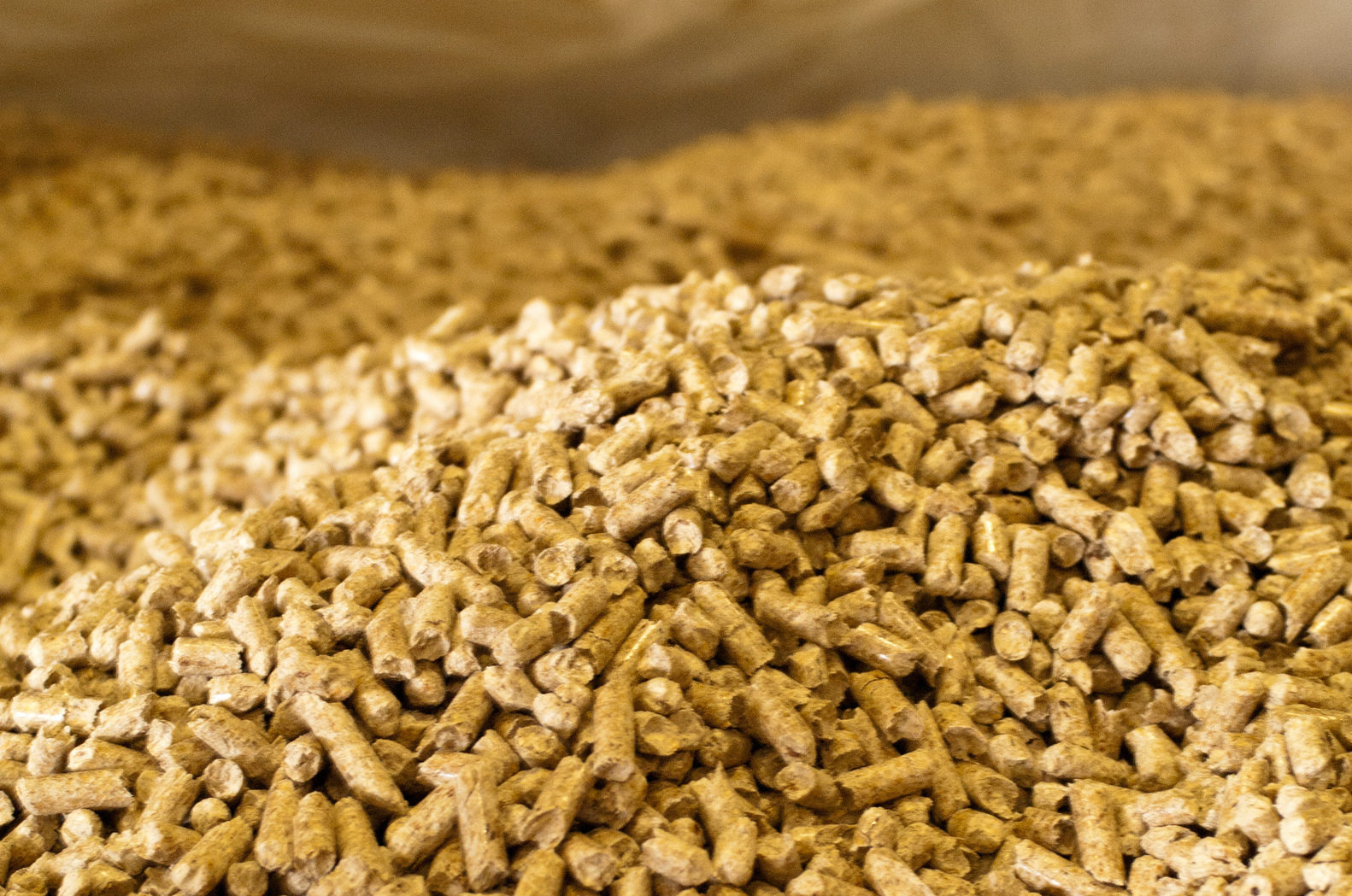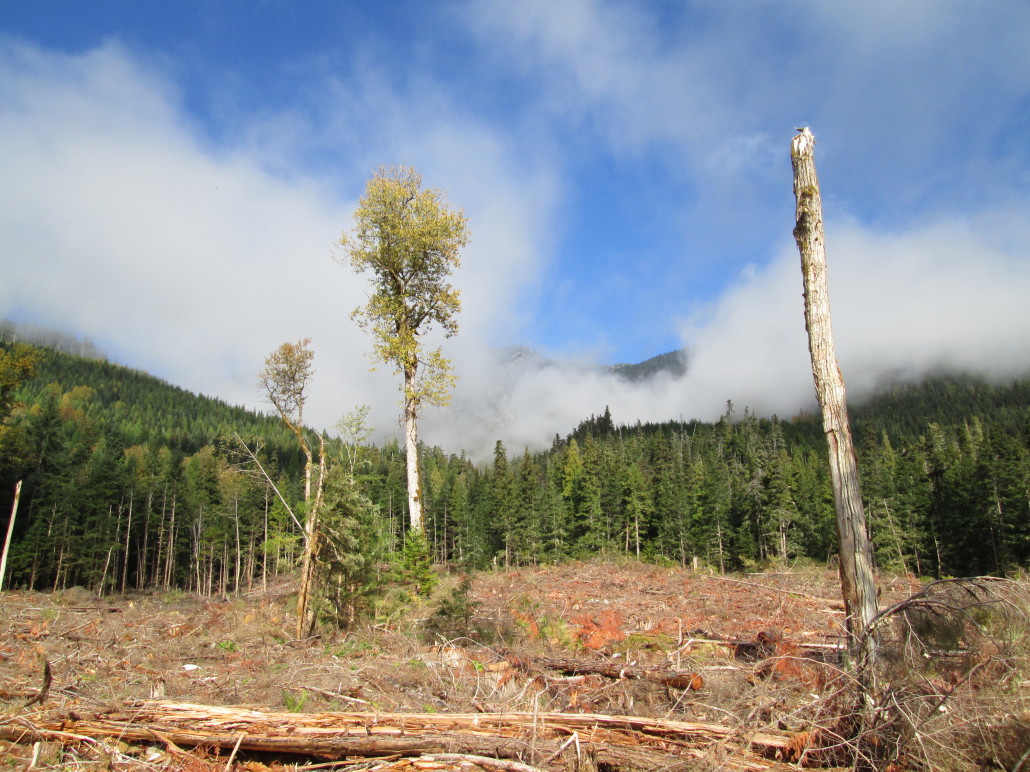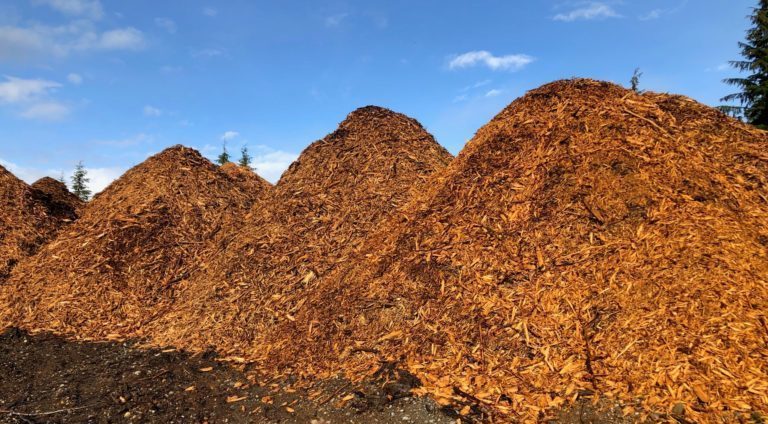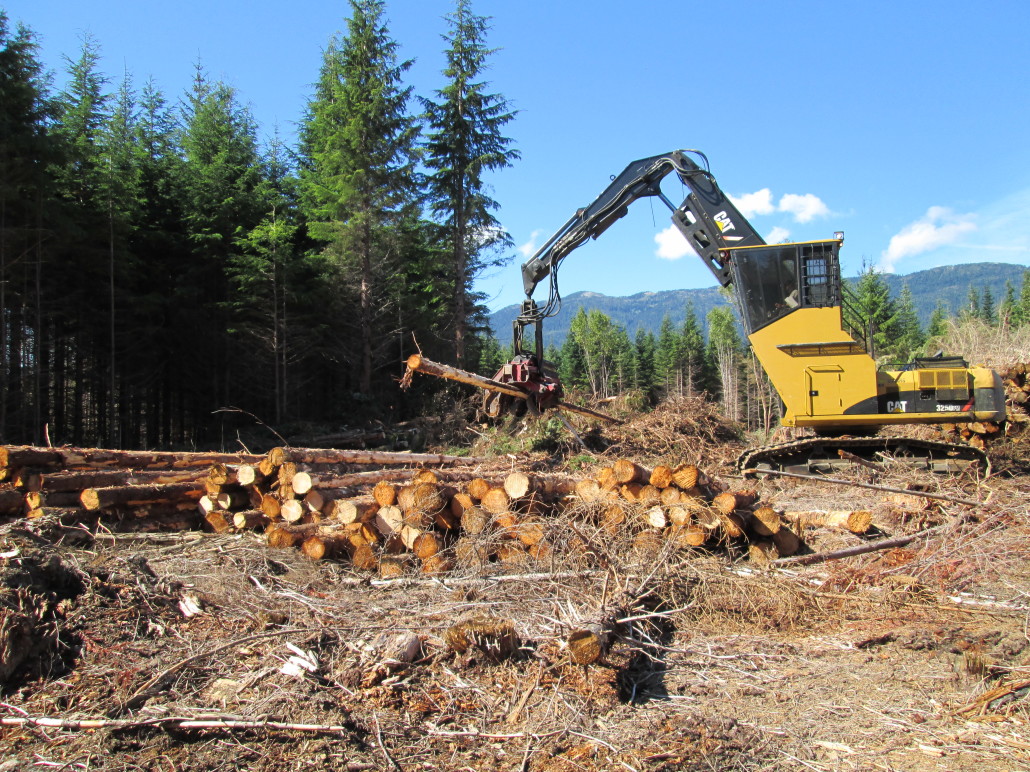
Water determines the Great Lakes Region’s economic future
Climate change, geopolitics and business opportunities power a blue economy
After two years of stockpiling wood waste from logging, the Terrace Community Forest — a company owned by the northwest B.C. city of Terrace — has finally found a way to put the wood to use.
The company received a provincial grant of nearly $450,000 to process and transport wood waste to Skeena Bioenergy, which will turn it into wood pellets to be burned for bioenergy in Canada and abroad. The first shipment went to the pellet plant this week.
While supporters of the project say it will reduce greenhouse gas emissions and use wood that would have otherwise been wasted, critics challenge the environmental claims and say such projects could promote wasteful logging.
B.C. Minister of Forests Doug Donaldson said in addition to reducing greenhouse gas emissions from slash burning, the project will also provide jobs and generate revenue, which will go directly back into the community.
“It hits on a lot of positive buttons,” he told The Narwhal in an interview.
Forest ecologist Jim Pojar said there are benefits to turning wood waste into pellets — especially in the Terrace Community Forest, where leaving slash behind can feed forest fires close to town — but warned there’s a danger of “greenwashing” the forestry industry by not acknowledging the complete carbon footprint of pellet production.
“Greenhouse gasses will not be reduced; the pellets themselves will of course be burnt,” he wrote in an email.
The grant comes from the Forest Enhancement Society, a Crown corporation set up in 2016 to support B.C. forestry projects that make use of damaged or low-value forests, among other initiatives. The society has allocated about $230 million in grants to more than 250 projects since its inception.
Wood pellets are made by combining ground-up wood with sawdust and sometimes adding “hog fuel,” a mixture of tree bark, wood shavings and clippings, by-products of processing trees at sawmills. The pellets, which look like pretzel sticks, can be used for residential and industrial heating and for industrial electricity.

Wood pellets can be used as a replacement for fossil fuels in heating and electricity. Photo: Oregon Department of Forestry / Flickr
In British Columbia, community forests are granted land tenures by the provincial government to manage natural resources locally. The Terrace Community Forest logs an annual harvest of 30,000 cubic metres — about 600 loaded logging trucks — in three areas around the city. The company is also responsible for wildfire mitigation.
For the past few years, the Terrace Community Forest has been thinning second-growth stands, resulting in about 15,000 cubic metres of white wood waste.
When logging companies deem wood unsuitable for commercial use, it’s often stacked in massive piles and burned on site because it usually costs more to haul out than a company can make selling it for pellet production or other purposes.

The Terrace Community Forest has been thinning second-growth tree stands over the past few years and bringing white wood waste to a processing area to be cut to log length. Photo: Terrace Community Forest
“Without this funding, we would be burning this fibre since it is otherwise uneconomical to transport it,” Kim Haworth, general manager of the Terrace Community Forest, said in a statement. “We would rather see the fibre used, generate some revenue and provide economic, social and environmental benefits to our community.”
Like many of the other 60-plus community forests in the province, the Terrace Community Forest uses its profits to support local organizations. Every year, it hands out about $50,000 to groups like the Terrace Off Road Cycling Association and My Mountain Co-op, which runs the ski hill, with any leftover profits going to the city.
The province claims bioenergy from trees is carbon neutral because burning a tree — in the form of thousands of pellets, for instance — emits the same amount of carbon dioxide as the tree captured in its life cycle.
Ecologists also say trees left to decay on the forest floor emit the same amount of carbon dioxide as they would if burned as pellets.
However, transporting and processing trees and wood pellets produces greenhouse gas emissions.
“Export to foreign markets, including long delivery chains powered by diesel and bunker C fuel, usually makes no sense from a carbon budget perspective, even if it is viable economically,” Terrace-based botanist and plant ecologist Phil Burton wrote in an email.
Emissions can be offset by planting replacement trees, which absorb carbon dioxide once regrown. But Pojar said it can take anywhere from 70 to 400 years for trees to grow tall enough to sequester as much carbon as mature trees that were cut down.
Donaldson admitted there’s more to the emissions equation than simply comparing burning slash to burning pellets. “There is a full-cost accounting lens that needs to be put on the carbon, CO2 equivalent emissions that are avoided,” he said.
Burton said there’s another problem with calling bioenergy carbon neutral.
He explained that biomass is less efficient than other fuel sources at producing energy. Significantly more pellets are needed to produce the same amount of energy as burning coal or natural gas. When pellets replace coal or natural gas, more carbon dioxide ends up in the atmosphere, he said.
Pojar, author of a 2019 report entitled Forestry and Carbon in BC, said providing incentives for pellet industry companies can perpetuate poor forestry management.
“Some argue that greater production of biofibre (pellets) should be promoted because it could help reduce slash burning,” he wrote in the report. “Such schemes — especially if subsidized by government, as is likely — could also provide a perverse incentive to continue wasteful logging practices.”
He said turning wood waste into pellets has benefits, but he is cautious about the growth of the practice.
“Environmentally, it’s a silver lining in that the residues are used instead of being incinerated in beehive burners as in the past,” Pojar wrote. “But if forest management is unsustainable, any environmental upside to utilizing residues can mask, or divert attention from, the overall negative impacts of the timber juggernaut on forest carbon and biodiversity.”
Since pellets can be used to replace fossil fuels, buyers — particularly in Europe and Japan — have increasingly looked to B.C. as a source.
As a result, pellet production across the province has been ramping up over the past few years, particularly in northwest B.C., with plants in Prince George, Vanderhoof, Houston, Smithers, Burns Lake and Terrace. More are proposed, including a large-scale operation in Hazelton.

The slash pile at the Terrace Community Forest. Photo: Kim Haworth / Terrace Community Forest

The slash pile at the Terrace Community Forest after being ground up for shipping to the pellet plant. Photo: Kim Haworth / Terrace Community Forest
With sawmills closing across the province, some companies have turned to logging whole trees to meet rising demand, including in ecosystems with mature western red cedars that provide critical habitat for endangered caribou, according to an investigation by Stand.earth.
Manufacturing wood pellets can make sense when wood would otherwise be burned, Burton wrote.
“If burn piles are the feedstock for pellet fuel, this is a good thing,” he wrote. “If cellulose is to be burned, capturing it for energy that displaces other fuel sources such as diesel or natural gas makes sense.”
While Skeena Bioenergy and other plants in northwest B.C. ship pellets to Europe and Asia, they also sell them locally.
Several local industrial companies use the pellets to run their heating systems, and residents use them as fuel in pellet stoves to heat their homes. While Skeena Bioenergy doesn’t sell small amounts to residential customers, people can buy in bulk.
Last winter, northwest B.C. faced a shortage of residential pellets during extremely cold weather. Donaldson said several village band councils teamed up to buy pellets from the plant and redistribute them to elders in the community.
Pojar and Burton agree localized use can have positive benefits.
“If the pellets were used locally for domestic heating, there could be an improvement in air quality if efficient pellet stoves replaced inefficient traditional wood stoves,” Pojar wrote.
Wood stoves, and the lingering smoke associated with their use, are ubiquitous in northwest B.C.
If pellets are used for domestic residential or municipal use, Burton said “this further contributes to bioregional sustainability and is a good thing.”

Leaving wood waste on the forest floor in Terrace is a fire risk, so ecologists say it makes sense to collect it and put it to use rather than leave it in place to decay. Photo: Terrace Community Forest
Pojar said the Terrace project makes sense.
“Ecologically it would be better to leave some of the debris (especially some logs) on site, where it would decay slowly,” he wrote. “But that won’t happen in the Terrace Community Forest because of fire hazard in proximity to human settlement.”
Burton said the project has great potential to set a positive example for communities around the province. Smaller tenures like community forests, he explained, can make decisions based on intimate local knowledge that contributes to the overall sustainability of the local environment.
“One of the beauties of community forests … is that they provide meaningful economic and amenity value to communities,” he wrote.
In Terrace, that means keeping the ski hill and mountain bike trails alive.
Get the inside scoop on The Narwhal’s environment and climate reporting by signing up for our free newsletter. On a warm September evening nearly 15...
Continue reading
Climate change, geopolitics and business opportunities power a blue economy

10 billion litres of sewage are dumped into Winnipeg’s lakes and rivers each year. Some...

Court sides with Xatśūll First Nation, temporarily halting Mount Polley mine waste expansion
